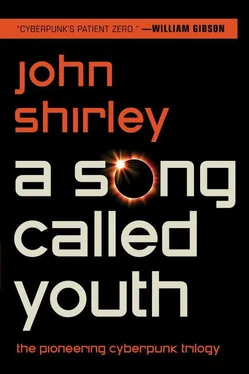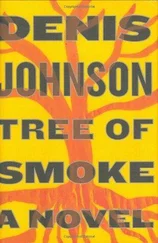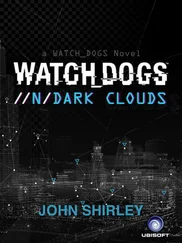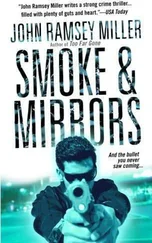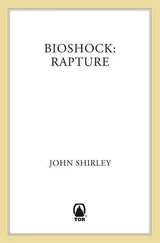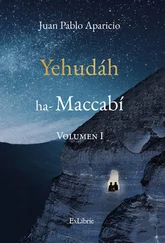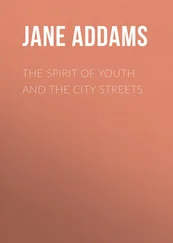This is not a post-holocaust novel.
Nor is this a novel about nuclear war.
It may well be that this is a pre-holocaust novel.
There was a small bird made out of titanium and glass. It had mechanical wings, electronic guts, and its head was a camera. But it was shaped much like a thrush and was about the same size. Its wings whiffed like a hummingbird’s as it flew through the damp, battered city… The city was Amsterdam.
In the winter of the year 2039, Amsterdam was occupied by the NATO forces which had, for the moment, succeeded in driving out the armies of Greater Russia, the shock troops of the neo-Com dictator, Koziski…
Global warming. Climate change. It had radically reduced the output of Russian agriculture—of the availability of fresh-grown food, and stock feed, in many places—and that meant food had become hard to get. The Russians were on the edge of starvation—some of them over the edge—when Koziski had decided that Russian armies would swarm into Eastern Europe, and keep on going, in order to corral food resources…
So far, it was a world war that hadn’t gone nuclear.
On the belly of the bird were serial numbers. The bird was a surveillance device, registered with the United Nations Intelligence Regulation Agency. Anyone punching the right serial numbers into a computer modem’d to UNIRA, along with the proper clearance codes, would be informed that the bird was licensed to British Naval Intelligence, under the auspices of the North Atlantic Treaty Organization.
The battery-powered bird had been activated on a British aircraft carrier twenty miles off the crumbling coast of Holland, at the request of the officer in charge of Civilian Law Enforcement. CLE was working out of an apartment building in one of the drier suburbs of half-sunken Amsterdam. The deserted building had been occupied by NATO Forces’ Dutch Command Unit as a temporary headquarters.
The CLE officer was an American from Buffalo, New York. His name was Yates. Captain Yates had a memo on his desk from the Second Alliance International Security Corporation (the SAISC, or SA for short) asserting that the SA’s supply lines had been “repeatedly disrupted” by the “civilian gang calling itself the New Resistance. ” The SA memo pointed out that it had been authorized by the Hague—those members of the States-General whom NATO had been able to contact—and by the UN Security Council, to police Amsterdam and the surrounding areas. The Second Alliance would see to it that the civilian population remained orderly, as well as safe from looters and other lawbreakers. To do that (the SA response memo went on peevishly), the SA had to move into Amsterdam, and it could not move the rest of its men in unless there were supplies in Amsterdam to sustain them. “I hardly need point out,” the memo continued, “that while the SAISC is a civilian private-police force, it must nevertheless work in close cooperation with the NATO military forces, and cooperation is a two-edged sword.” Yates frowned, reading that part. Cooperation as a sword? “The terrorist gang known as the New Resistance,” the memo shrilled, “is a danger to the NATO armies as much as the SA inasmuch as it commonly steals supplies from NATO forces and disseminates antimilitary tracts which irrationally lump NATO and the Russian forces together as if both were the aggressors in the area.”
Yates had shrugged and sent the communiqué to the nearest NATO ship with surveillance equipment, the Lady Di.
And the bird had been set free.
But not free to fly about at random. It flew in a widening spiral pattern through the civilian areas, looking and listening for gatherings of “four or more civilians.” There weren’t many people left in Amsterdam, so the job wasn’t as time-consuming as it might seem. When the bird found gatherings of four or more civilians (not very often) it attached itself to the outer wall of the building in which the gathering was taking place, and it laid an egg. The “egg” was actually a tiny hemisphere of nanomaterials that clung to brick or concrete or glass or plasteel and sent out minute sensors. The sensors picked up the heartbeats of people, and if there were enough heartbeats close together, it transmitted a signal. Under martial law it was illegal for more than three persons to gather together without supervision, except in designated areas. The designated areas were under even closer surveillance.
The commander of The Netherlands unit made the gathering-size rule as there had been some trouble with what he described as “low-grade terrorist conspiracies.”
Yates, having dispatched the birds to watch for illegal meetings, dispatched another communiqué to the SAISC, telling them what he’d done. Soothing them.
The SA, receiving the message, communicated with their contacts in the USAF Jumpjet Reconnaisance Unit. SA sympathizers in Jumpjet Recon were given the frequency specifics of the transmitting “eggs,” and were urgently requested “in the spirit of cooperation,” to “triangulate these terrorist cabals and do what is necessary to put them out of business.”
The bird flew from one block to another, mile after mile, occasionally attaching eggs. After the third time, it flew past a certain high-rise, where it startled a real bird, a crow, which had been restlessly circling the building.
The crow was shaken by this close encounter with a “UFO” and took itself to the nearest terrace railing to recuperate. It settled onto the railing, looked around, and saw with relief that the bird with the metal wings and a glass head had flown away.
But someone else was there, at the other end of the terrace.
“This city is dead.” He said it out loud, to a crow. The big black crow was perched on the concrete railing that ran mostly intact around the rubbled terrace. They were thirty stories above the flooded street, where dusk darkened the floodwater to indigo.
The crow heard, tilted a glare at him. Smoke went on, “This city is dead, and I’m someone. I’m still someone. Being here hasn’t helped.” He spoke to the crow and to the clammy, acidic breeze—it smelled like a ruptured car battery—that lifted the edges of the rain-caked stack of printouts some looter had tossed onto the terrace. “I’m still Smoke, Jack Brendan Smoke, or Brendan Jack Smoke or Smoke Jack Brendan. Mix it up the way you want, it’s still there. I thought it would leach off here, crow. Like…” He paused, not sure if he was speaking aloud or thinking it now, and wondering which it was. He shrugged and went on, “Like you have a pan of water, nothing else, just dead flat calm water, and you pour, say, a little ink into it, and the ink spreads out, gets all diluted, in a few days, you can’t see it anymore. But it didn’t work. The ink is still there. I’m still Smoke… I could leave Amsterdam, crow. I might not be Jack Smoke where there’s enough people. Lost in a crowd. I could go to Paris. There’re still a lot of people in Paris.”
The crow’s claws made a skittering sound as it shifted on its perch. Shifted a little closer to him.
It occurred to Smoke that the crow might not be real; might be a cybernetic fake. But he was past caring.
Smoke put his hands on the railing, felt the concrete’s cold bite his palms. He looked at his hands. They seemed creatures apart from him: clawlike gray things, with horny, overgrown yellow nails. He looked that way, all of him: clawlike, gaunt, dark with grime, his layers of scavenged shirts and jackets and pants gone all raggedy edged and uniformly dirt-colored, so he looked like a crow himself, in molting. He had long, matted black hair and beard, and a bird’s bright black eyes and an eagle-beak nose. He chuckled softly, thinking that perhaps the crow had mistaken him for one of its own…
Читать дальше
